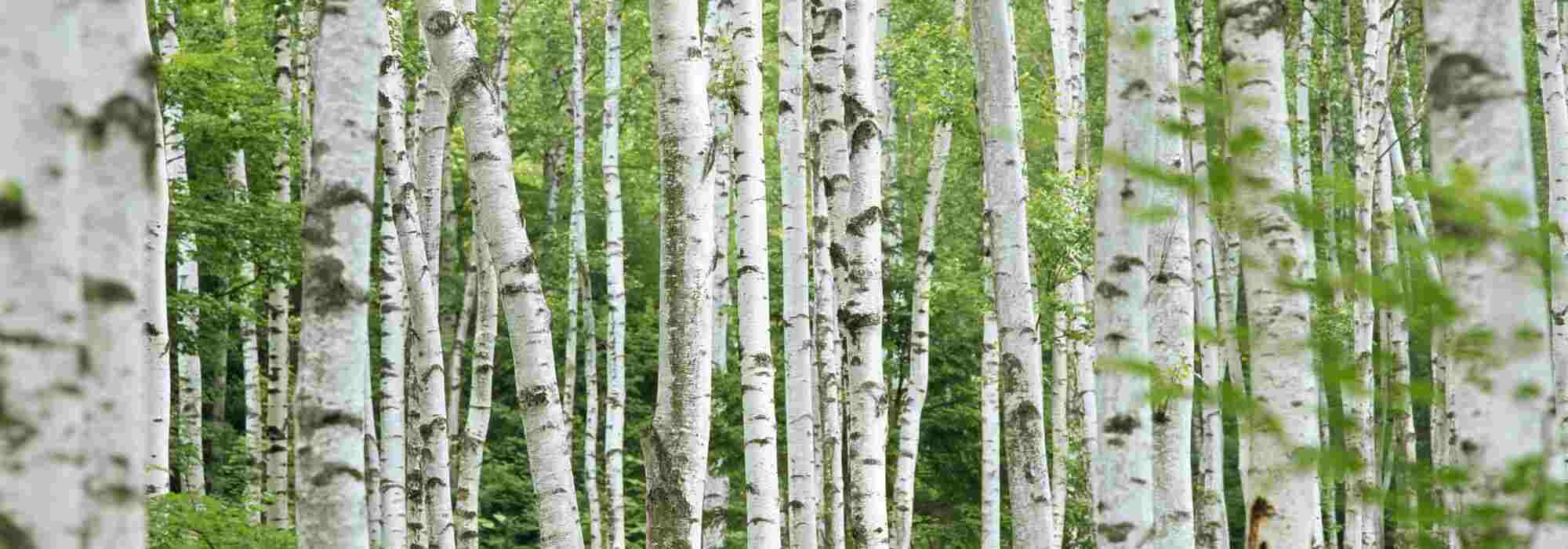
Birches: the most beautiful barks
Decorative silhouettes in the garden
Contents
Taking on sculptural forms at times, birches adorn themselves with magnificent bark in a variety of sometimes surprising colours: white, copper, pink-orange, red, brown, grey, or black. The texture of the trunk also varies depending on the age of the tree, the species, and the varieties. For example, while the smooth bark of Betula pendula peels off in fine, delicate strips, Betula nigra is more demonstrative, exfoliating considerably in wide bands that curl upon themselves. Birch bark is so decorative that interior design specialists have made it very trendy. And so, birch also finds its way into our living rooms! As gardeners, we particularly enjoy admiring these trees in the garden. Discover my selection of seven birches with stunning bark.
And to learn more about their cultivation, feel free to check our Birches: planting, pruning, and maintenance guide.
Betula albosinensis 'Fascination': a stunning copper-coloured bark
The Betula albosinensis ‘Fascination’ is very different from classic white-barked birches. It is distinguished by its pale, shiny coppery bark. Sometimes tinged with pink, brown, orange, or grey, its bark varies with the age of the tree. It peels off in large flakes, revealing a new bark covered with a fine white to bluish bloom. Known as the “Chinese red birch,” this deciduous tree is highly decorative in winter. Completely devoid of its foliage, it allows us to admire its stunning bark and its slightly trailing dark red branches. With a slow growth rate (25 cm per year), its pyramidal silhouette reaches about 8 m in height and 5 m in width at maturity. Initially dark green, its leaves turn a beautiful golden yellow in autumn!
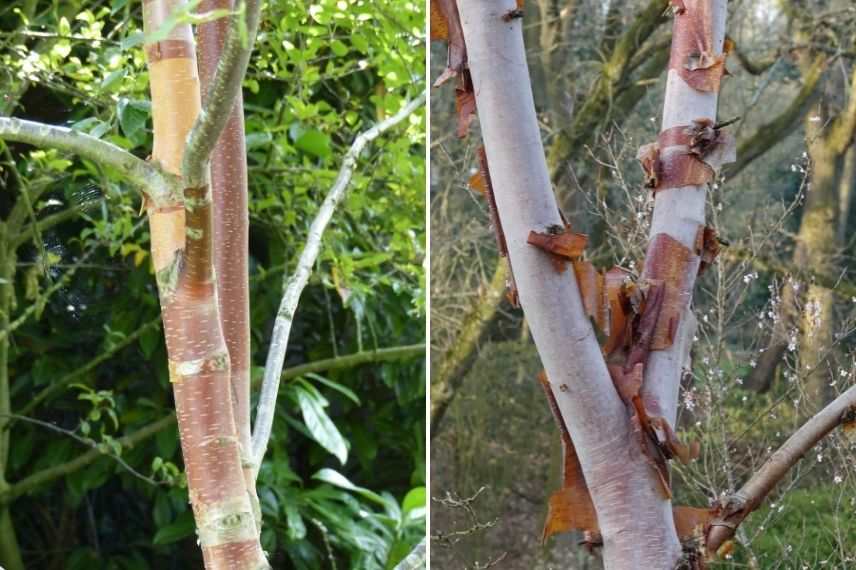 Betula albosinensis ‘Fascination’</caption]
Betula albosinensis ‘Fascination’</caption]
Read also
Birches: planting, pruning and careBetula utilis jacquemontii: the birch with the whitest bark
The Betula utilis jacquemontii is one of the most well-known and beautiful birches with white bark. It is around the age of 4-6 years that this birch reaches the peak of its whiteness. Ideal for white gardens, the Himalayan birch is adorned with very white bark, particularly smooth and free of cracks or blemishes on young specimens. This bark is simply marked with fine and discreet horizontal striations of cream colour known as lenticels. As it grows, the trunk of this pure white birch exfoliates in strips. Sometimes, even the largest branches of this tree are quite white. With age, this birch then displays delicate shades of beige. In summer, its dark green leaves contrast beautifully with the white structure of this tree. The foliage will turn a golden yellow in autumn before disappearing for winter. Note that this very hardy birch grows more slowly than its relatives (about 20 cm per year) and reaches 15 m in height with a spread of 5 m at maturity. Planted in isolation, the Betula utilis jacquemontii is majestic with its brilliant bark!
→ Read our article on the Betula utilis jacquemontii, also known as the Himalayan Birch
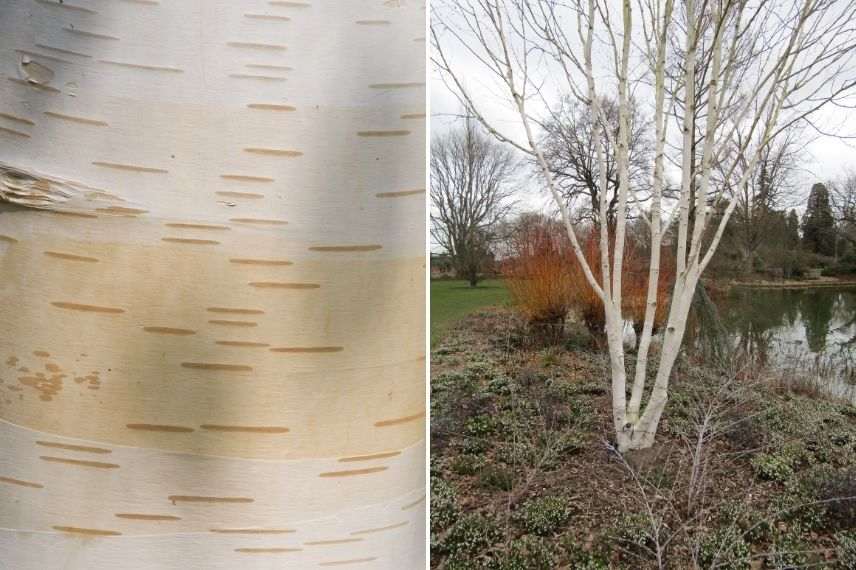
Betula utilis jacquemontii (photo by Leonara Enking – Flickr)
Discover other Betula - Birch tree
View all →Available in 1 sizes
Available in 1 sizes
Available in 2 sizes
Available in 1 sizes
Available in 2 sizes
Available in 1 sizes
Available in 2 sizes
Available in 1 sizes
Available in 1 sizes
Available in 1 sizes
Betula papyrifera: a remarkable bark with strong exfoliations
The Betula papyrifera is known as paper birch due to its fine bark that peels like paper. When young, this birch displays brown bark, but it whitens as the tree matures (from 20-25 cm trunk circumference). Initially white on the surface, the bark peels, detaches to curl upon itself, forming rolls of paper. Underneath, the young pale bark is tinged with pink-orange or brown. As it ages, the paper birch also becomes marked with black. It also offers bright yellow foliage in autumn. With a conical habit, this large, fast-growing tree can reach up to 25 m in height with a crown spread of 12 m. The Betula papyrifera therefore needs space to develop and is suited for large parks and gardens. Note that this species prefers moist soils. Ensure that the location you choose for it remains sufficiently cool in summer.
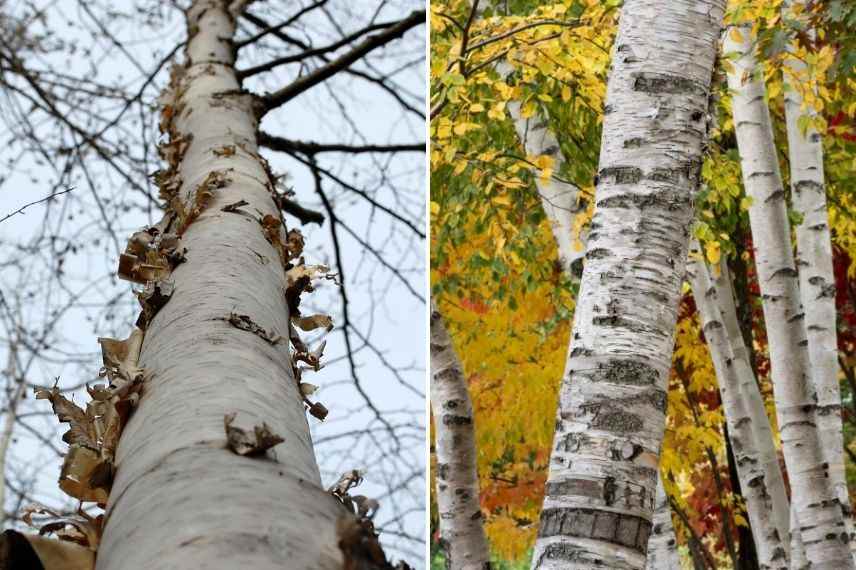
Betula papyrifera: on the left, the exfoliations of the bark curling (photo Gutenfrog – Flickr); on the right, older specimens marked with black
Read also
The most beautiful barksBetula nigra ‘Heritage’: a highly ornamental multicoloured bark
The Betula nigra ‘Heritage’ is a stunning variety of black birch valued for its colourful bark. The trunk of this birch is silver-white and smooth on young specimens. Gradually, over time, the bark darkens on older trees, taking on shades of pink, cream, and brown. Rugged, undulating strips of bark then peel away in broad bands to reveal lighter bark underneath. Its young reddish-brown, lenticellate, and slightly trailing shoots are also very decorative. In spring, its male aments are long, measuring up to 8 cm in length. Smaller than the typical species, this birch reaches up to 9 m in height with a crown of about 8 m in diameter starting between 3 and 6 m above the ground. Fast-growing, the ‘Heritage’ river birch often develops in coppice (with multiple trunks). Selected in the United States in 1968 by Earl Cully, this cultivar is vigorous and capable of resisting attacks from the birch borer, an insect whose larvae burrow galleries beneath the bark.
 Betula nigra ‘Heritage’</caption]
Betula nigra ‘Heritage’</caption]
Betula pendula: a classic with a two-tone bark
Originating from Europe, Betula pendula (also known as Betula alba, Betula verrucosa) is widely spread across our territory. Its straight trunk, sometimes multiple, is covered with brown bark that whitens over time. When young, the smooth bark renews itself by shedding thin strips. Later, mature white birches display prominent black fissures, creating a pattern against the white background. These stripes add to the charm of this tree. This species is also referred to as “verrucate birch” due to the verrucate lenticels present on the branches. With a rather slender and elongated silhouette, the common birch can reach a height of 20 m. The fine, flexible, and pendulous branches give this woody species much grace. This robust tree, which grows large, is easy to cultivate and adapts to many situations.
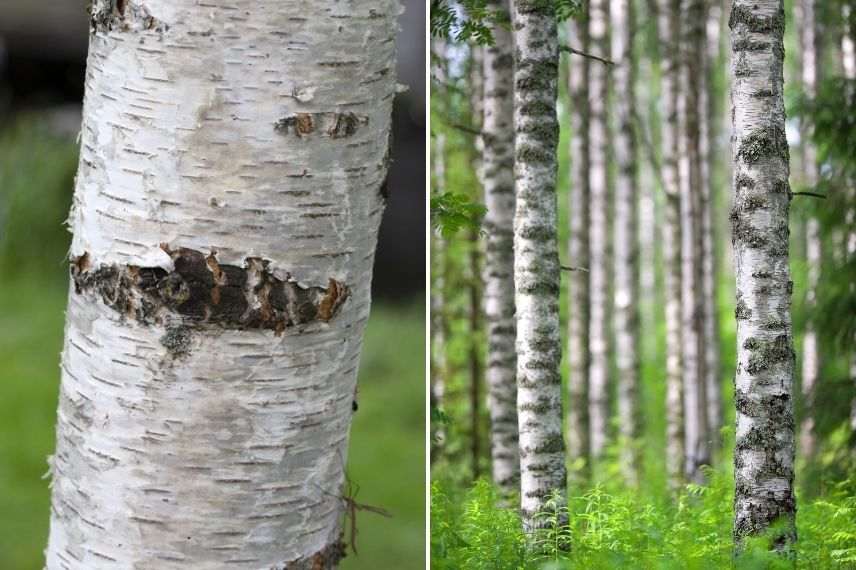
Betula pendula
Betula nigra: a tree with changing bark
Betula nigra is a birch tree with highly exfoliating bark. On young specimens under 20 years old, the trunk is cinnamon to bronze brown and peels off in many large sheets. By 20-25 years, the bark becomes rough, either dark brown almost black or greyish-white. The curled leaves, resembling loops and detaching, create texture and reveal a smooth orange and greyish trunk beneath. The slightly pendulous branches with spreading twigs bear glossy, dark green deciduous foliage that turns yellow in autumn. In this birch, the leaves, pubescent underneath, are elongated, rather ovate in shape, and very regularly dentate. Its twisted framework gives it an irregular but rounded habit, reaching a height of 15 to 20 m. The black birch often grows with multiple trunks. It is also known by the vernacular name river birch, as in its natural habitat, it thrives along waterways, marshes, or in floodplains. However, it is quite tolerant of soil conditions and can thrive perfectly well in a drier environment. Note also that its flowering with pendulous male aments is very abundant in spring.
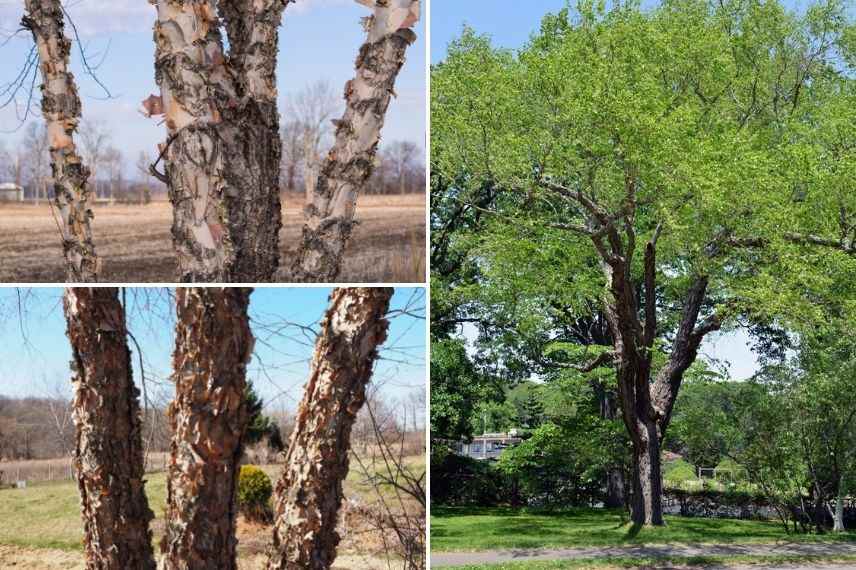
Betula nigra: its trunk darkens over the years (photos left F.D. Richards-Flickr; right photo Plant Image Library)
Betula pendula ‘Tristis’: a long-lasting white bark
The distinctive feature of the weeping birch ‘Tristis’ is its bark, which remains white for a very long time, even into the later years of the tree. Betula pendula ‘Tristis’ displays a smooth, pure white bark that is very bright. Over time, the oldest trees slightly exfoliate and develop grey fissures. This very old variety, discovered in 1865, is highly valued for its appearance. The ‘Tristis’ birch has a structure of trailing branches reminiscent of the weeping willow. When it sheds its foliage for winter, its silvery silhouette resembles a graceful cascade. Medium to large in size (its height reaches between 12 and 20 m with a spread of 6-8 m) if not contained, this graceful tree is best reserved for spacious gardens, preferably planted as a specimen to be admired by all. Although it appears delicate, this birch is vigorous, robust, and very hardy.
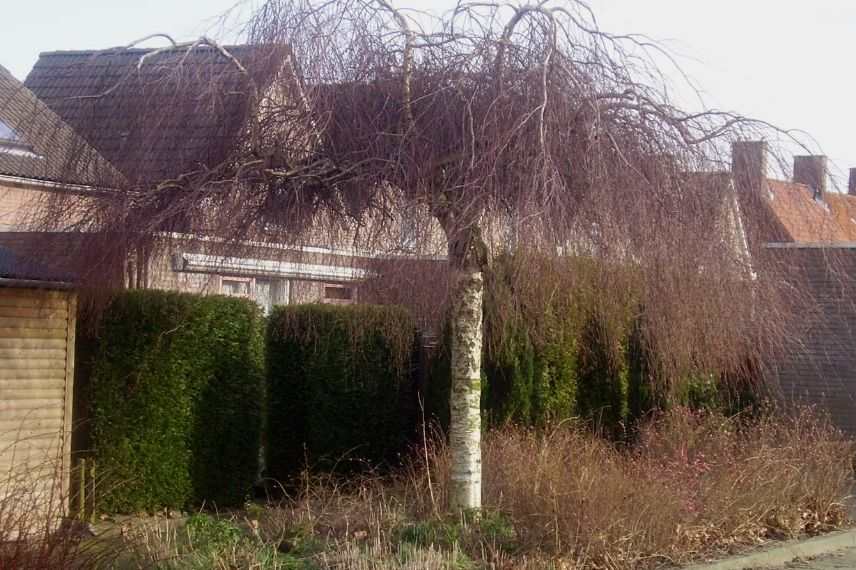
Betula pendula ‘Tristis’ (photo Rob Hille – Wikimedia)
- Subscribe!
- Contents
































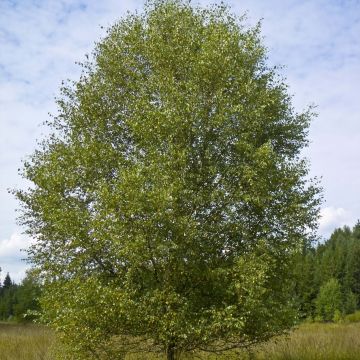
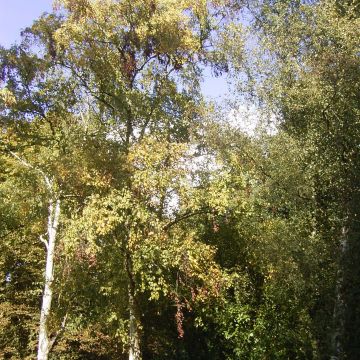
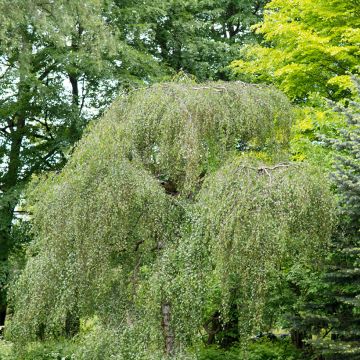
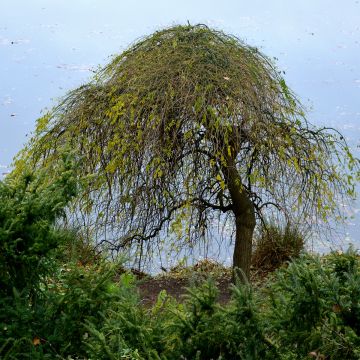

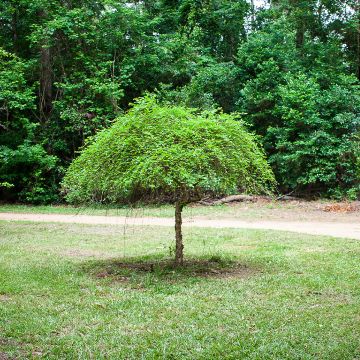

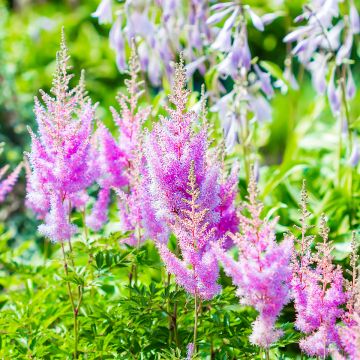

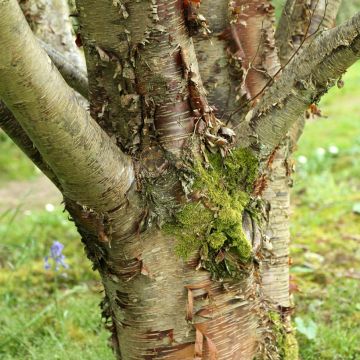
Comments